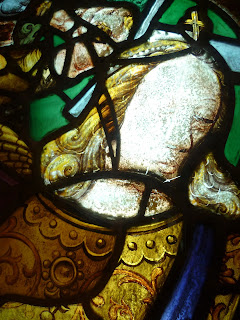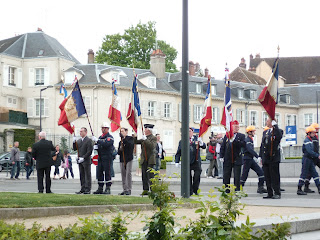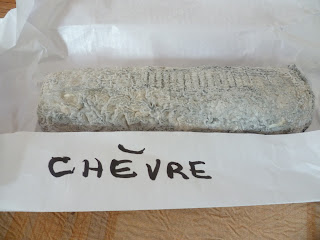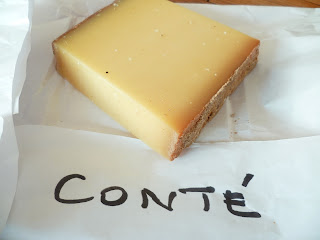As I mentioned in my last blog post things are coming to an end an at a heart breaking pace.
In conjunction to this Tuesday I decided to send out an e-mail to my Rotary club, in order to see if anyone was interested in having me over for some of the few dates that remain.
And as always the mebers of my dear rotary club were kindly proactive and that same night I had an invitation to spend two days at Soline Legué's house in Chartes.
The morning of day one, upon awakening I went to the boulangerie with Soline to search the days bread and my breakfast; a warm pain au chocolat.
We then stopped by the cheese shop ( for more details read my blog post
"Fromagier en Chartes") and the grocery shop. Then after less than five minutes of being home I started hearing what sounded like a marching band.
So we went to check it out and this is what I saw:
In fact May 8th in France is a public holiday in commemoration off the end of WWII. French flags are displayed on any public building and ceremonies are fulfilled in a large cities. And what I though was a marching band was actually the announcing band for the local event.
Might I mention that at the event Soline and I were interviewed by a journalist..
This was one of the articles in the paper the next day:
http://www.lechorepublicain.fr/eure-et-loir/actualite/pays/pays-chartrain/chartres/2013/05/09/police-six-medailles-et-des-hommages-1544237.html
Unfortunately we were not in the paper but maybe next time.
We then ate a nice little lunch and were soon off to see the Chartres Cathedral ( photos will be on a separate post) and finished the afternoon by a walk around the old city center.


























































